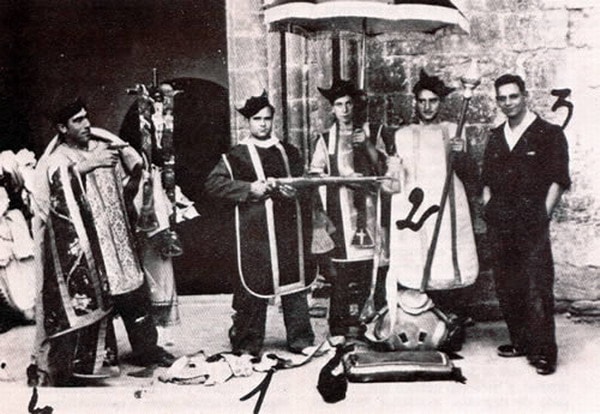Spanish Civil War

The Spanish Civil War was preceded by the fall of the Monarchy and the eventual rise of the Second Spanish Republic in 1931 [Phillips, W.D. & Phillips, C.R, 2010: 247]. Labor disturbances, economic problems, and social unrest plagued the peninsula throughout the Republic’s life, and it eventually dissolved into a conflict between the Nationalist, or Falangist, forces (which were combined fascist forces, reactionary monarchists called Carlists, and traditional conservatives) on the one hand and the Republican forces (who represented a broad leftist spectrum that ranged from democrats to anarchists and communists) on the other [Spain, 2019; Phillips, W.D. & Phillips, C.R., 2010: 257-58, 264; Share, 1986: 555]. The Nationalists, supported by Nazi Germany and Italy, wanted to combat those still loyal to the Republic and quell nationalism in the Basque Country and Catalonia, who had sided with the Republicans [Spain, 2019; Phillips, W.D. and Phillips, C.R., 2010: 254-255].
After two and half years of war and hundreds of thousands of deaths, Catalonia surrendered [Calamur, 2017; Gencat, 2018]. The Republican forces in turn eventually surrendered as well, and the Falange and the military took power in Spain. The Statute of Autonomy granted to Catalonia was abrogated, and Catalan language and identity was forbidden in the public sphere in favor of Castilian unity under the Falangist system [Guibernau, 2004: 50-51]. Castilian Spanish became the only language permitted in schools, and well over a million Spaniards from other parts of the country moved to Catalonia throughout the duration of the regime in search of opportunity, which left the Catalan language in a precarious position, and for the most part only used in private [Guibernau, 2004: 67]. The idea of independence and of the Catalan spirit, however, never quite faded from the Catalan political consciousness, and the Generalitat, the governing body, went into exile [Gencat, 2018; Guibernau, 2004: 53].